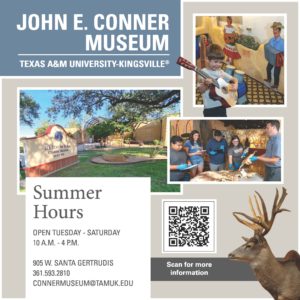University works with authorities
On April 6, Texas A&M University Kingsville (TAMUK) released a statement to students, faculty and staff informing them that dozens of alleged WWII explosives were found at Site 55.
Site 55 is a 140-acre research station area owned by the university located 25 miles away in Baffin Bay.
According to TAMUK’s Marketing and Communications Department, the explosives were found by the Kleberg County Volunteer Fire Department.
“Currently, assessment of the area continues and there is no timeline for when the area will be re-opened,” Chief Marketing & Communications Officer Adriana Garza-Flores said.
Responding authorities to the WWII explosives included the Kleberg County Sheriff Department, the University Police Department, Kleberg County’s Volunteer Fire Department, Corpus Christi Police Department Bomb Disposal Unit and the Texas Department of Emergency Management.
“The Department [of Biology] has conducted research studies in ecology, mammalogy, ornithology, herpetology and ichthyology since the late 1960s [at Site 55],” Department Chair and Associate Professor for the Biology Department Dr. Richard Laughlin said.
There is no current research being done at the site, but the department is looking to increase teaching activity at the site.
“We have between 50-60 master’s theses from the department with projects based at Site 55. We have also hosted numerous external collaborators from TAMU-CC, UT-Austin, North Dakota State University, Carleton University, and California Academy of Sciences,” Laughlin said.
Laughlin said the researchers that have used Site 55 in the last five years have retired, with a hiring process to replace those retirees, to continue research at the 140-acre station.
“We were not surprised. The history of the site first as a naval airstrip, and then as a practice bombing range, is well known in the department,” he said.
Access to Site 55 remains restricted, with no timeline of when Site 55 will re-opened
Laughlin hopes there is minimal impact to future research at the site.
“There are ongoing discussions about mitigating the potential danger with appropriate state and federal agencies, taking into account the purpose of Site 55 for teaching, research and outreach,” he concluded.

